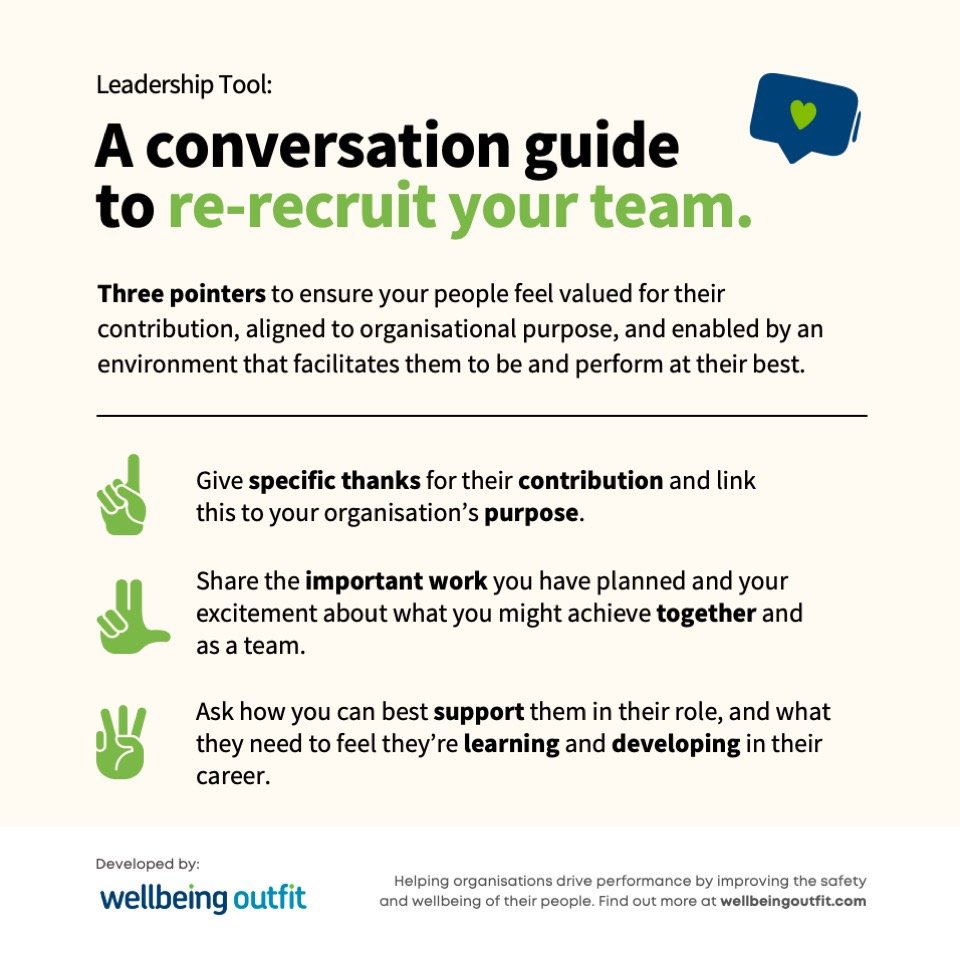Burnout: What an organisational response looks like
“Whenever I compliment my team I always say they're 'really hardworking' because they often work weekends. I've just realised that applauding them in this way might inadvertently be driving a culture where working weekends is expected or normalised. This is certainly not my intention.”
– People leader, May 2022
In 2019, the World Health organisation classified burnout as an occupational phenomenon resulting from chronic workplace stress. It affects workforces globally, and it's on the rise.
While the enormous uncertainty we faced during the pandemic heightened people's experience of burnout, it also magnified concerns that existed in the workplace long before COVID, as distinct from people feeling generally stressed or spread too thinly. This is because the main causes of burnout are rooted in organisational culture rather than in an individual's ability to cope – and as an organisational problem, an organisational response is needed.
What does an organisational response to burnout look like?
Much of our work in this area over the past two years has involved using psychology in a predictive sense, helping leaders to understand what might be around the corner for their people, and looking at the positive experiences they can proactively create for them in the daily mechanics of their business.
At the strategic level, embedding wellbeing as the key enabler of high performance in an organisation is by far the most impactful, sustainable approach. We help organisations to do this through the development of an evidence-based, measurable, and culturally-aligned safety, wellbeing and performance plan. Download an overview of the program or email Carolyn for more information.
At the tactical level, we recommend implementing a couple of interventions that can be moved on quickly, and help bring some immediate relief to people experiencing burnout. Organisations we're working with have found the following to be effective:
Re-recruit your people.
People are reframing their relationship to work and will continue to do so over the next 2-3 years. Those who feel their work is meaningful, valued, and connected to organisational purpose are less likely to burn out and/or leave.
Meet 1:1 with your team (by the end of the financial year) to reconnect them to your organisational purpose, and to let them know they are valued and essential to achieving your goals over the coming months.
Use our conversation guide as a simple framework for this discussion.
This will give them the connecting experience they had when they successfully interviewed for their job, and help address another issue: staff retention.
Help your people to take leave within the next 6 months.
Breaks away from work are essential for staying motivated and fresh at work, however we've become unpractised at planning for holidays over the past couple of years.
Ask your team to prioritise leave and plan for a 2-week (min.) break to be taken within the next 6 months. Offer your support on the work front to help them plan and feel organised for this.
This will not only rejuvenate your team members, it will help address another issue: excessive leave accrual.
These are two simple, highly effective leadership practices that can be implemented efficiently and turned into organisational culture-building initiatives across teams. We'd love to hear how you go, and to hear about other initiatives you've undertaken to help reduce burnout in your people.
Speak to us about how we might partner with you to create a culture of high wellbeing, high performance that aligns with strategy and supports your organisational goals.
While we're here:
📅 Jono Nicholas, Wellbeing Outfit's Managing Director, is presenting at:
The Workplace Mental Health Symposium, Sea World Resort Conference Centre, Gold Coast, 22-24 August 2022
The Future Place REwork Summit 2022, Sofitel Wentworth Sydney + virtual, 7-8 September 2022.
Complete the form below 👇 to receive occasional updates from the Wellbeing Outfit in your mailbox.


